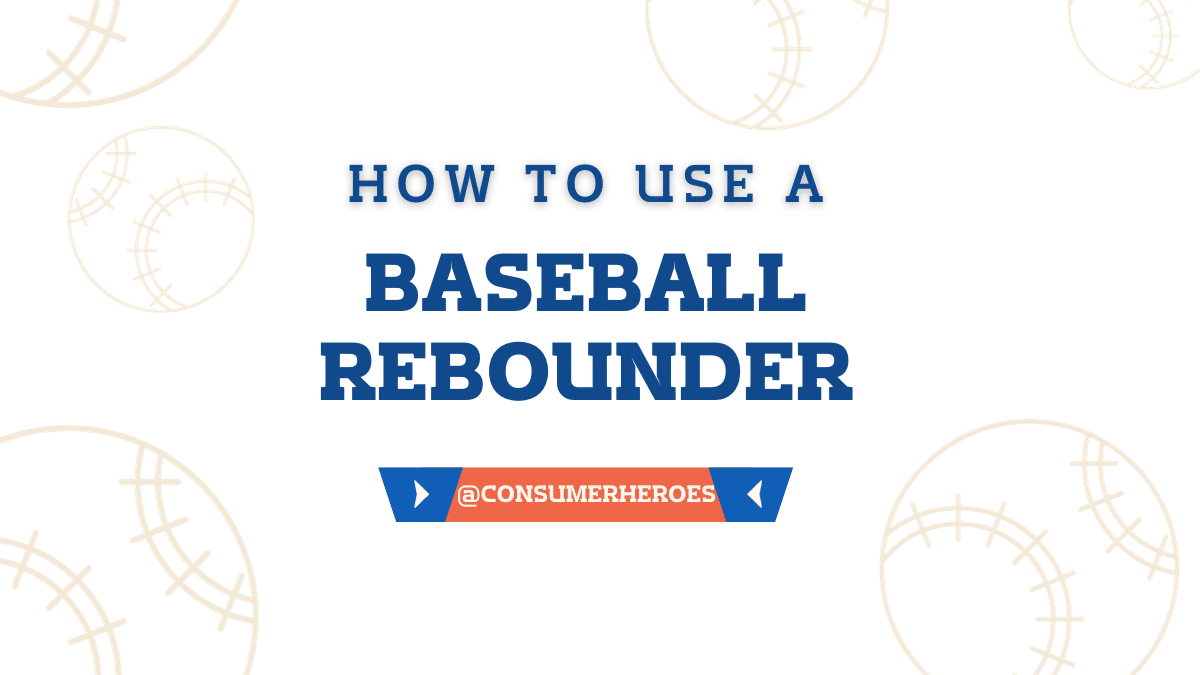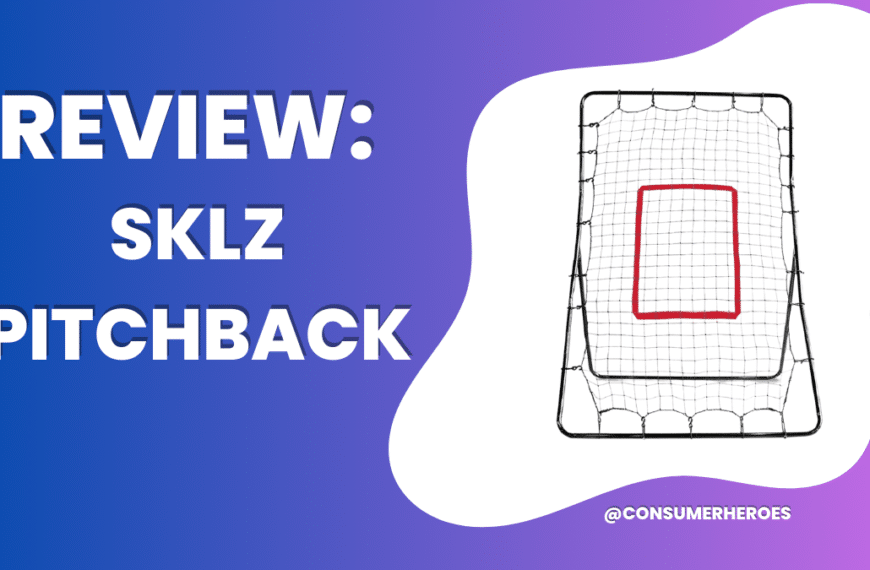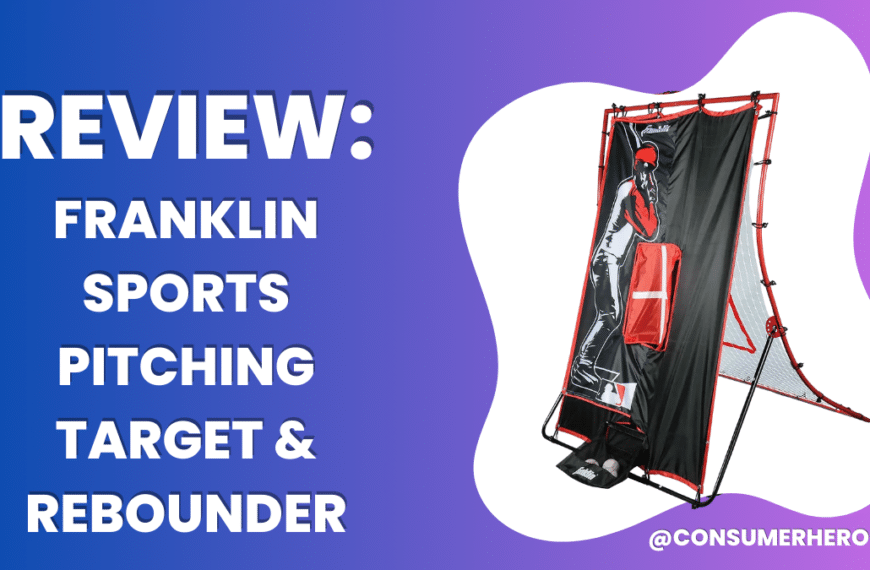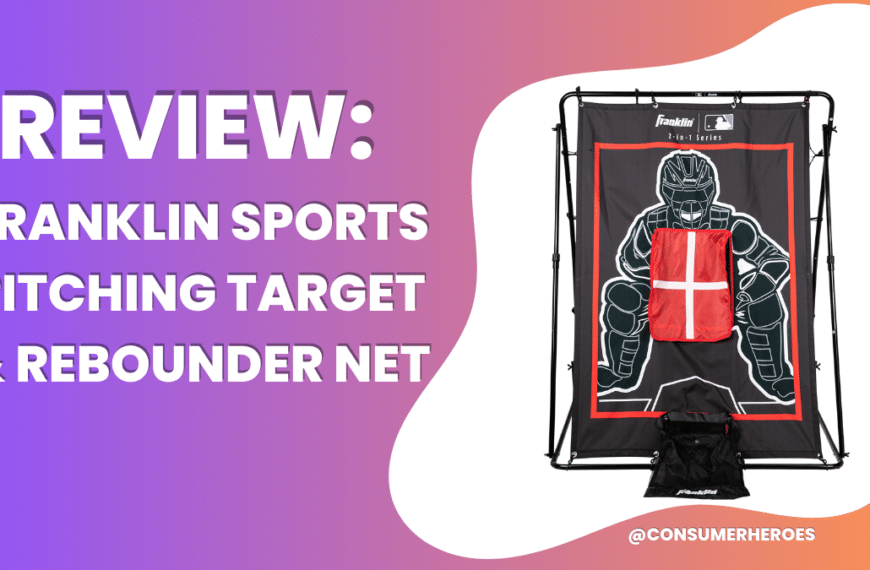Are you looking for ways to improve your baseball skills? A baseball rebounder might be just what you need. A rebounder is a versatile training tool that can help you improve your hitting, fielding, and throwing skills. Whether you’re a beginner or an experienced player, a rebounder can help you take your game to the next level.
Using a rebounder is easy, but it’s important to use it correctly to get the most out of your training. In this article, we’ll show you how to use a baseball rebounder to improve your skills. We’ll cover the basics of rebounders, including how to set them up and how to use them for different types of training. By the end of this article, you’ll be ready to start using a rebounder to take your baseball skills to the next level.
Understanding the Basics of a Baseball Rebounder
If you’re looking to improve your baseball skills, a rebounder is a great tool to have. A baseball rebounder is a device that allows you to practice throwing, catching, and fielding on your own. It’s a simple piece of equipment that can have a big impact on your game.
A rebounder consists of a net or target that is attached to a frame. The net is designed to bounce the ball back to you when you throw it at the target. Some rebounders have multiple targets, which can be adjusted to different angles and heights. This allows you to practice different types of throws and catches.
When using a rebounder, it’s important to start with the basics. Begin by standing a few feet away from the target and throwing the ball at it. As you get more comfortable, you can move further away and try different types of throws, such as grounders, pop-ups, and line drives.
One of the benefits of using a rebounder is that it allows you to practice your skills without needing a partner. This can be especially helpful if you’re trying to improve your skills outside of practice or if you don’t have anyone to practice with.
To get the most out of your rebounder, it’s important to use it regularly. Set aside some time each day to practice your throwing, catching, and fielding. With consistent practice, you’ll see improvements in your skills and confidence on the field.
In summary, a baseball rebounder is a simple but effective tool for improving your skills. Start with the basics, practice regularly, and you’ll see results in no time.
Choosing the Right Baseball Rebounder
When it comes to choosing the right baseball rebounder, there are a few things you need to consider. Here are some key factors to keep in mind:
Size and Material
The first thing to consider is the size and material of the rebounder. The size of the rebounder will depend on your needs and the space you have available. If you have limited space, you may want to consider a smaller rebounder. On the other hand, if you have a larger space, you may want to consider a larger rebounder.
In terms of material, most rebounders are made from either metal or plastic. Metal rebounders tend to be more durable, but they can also be heavier and more expensive. Plastic rebounders are lighter and more affordable, but they may not be as durable as metal rebounders.
Price and Brand
Another important factor to consider when choosing a baseball rebounder is the price and brand. Rebounders can range in price from under $50 to several hundred dollars. While it may be tempting to go for the cheapest option, keep in mind that you often get what you pay for. Investing in a higher-quality rebounder may be worth it in the long run.
When it comes to brand, there are several reputable companies that make baseball rebounders. Some popular brands include SKLZ, Rukket, and Franklin. Do your research and read reviews to find a brand that has a good reputation for quality and customer service.
Type of Rebounder
Finally, you’ll want to consider the type of rebounder you need. There are several different types of rebounders, including:
- Pitchback rebounders: These are the most common type of rebounder and are designed to simulate a ground ball or line drive.
- Multi-sport rebounders: These are designed for use with multiple sports, including baseball, soccer, and lacrosse.
- Pop-up rebounders: These are designed to be portable and easy to set up and take down.
Consider your specific needs and the type of training you’ll be doing to determine which type of rebounder is right for you.
By considering these factors, you can choose the right baseball rebounder for your needs and get the most out of your training sessions.
Setting Up Your Baseball Rebounder
Setting up your baseball rebounder is a straightforward process that requires minimal effort. The following steps will guide you on how to set up your baseball rebounder:
- Find a suitable location: Choose a location that is flat, spacious, and free from any obstacles that may interfere with your practice.
- Assemble the rebounder: Follow the manufacturer’s instructions to assemble the rebounder. Ensure that you have all the necessary tools and hardware before you begin.
- Adjust the angle: Adjust the angle of the rebounder to suit your needs. A steeper angle will give you a higher bounce, while a shallower angle will give you a lower bounce.
- Secure the rebounder: Once you have adjusted the angle, secure the rebounder to the ground using stakes or sandbags. This will prevent the rebounder from moving during practice.
- Test the rebounder: Test the rebounder by throwing a few balls at it. Make any necessary adjustments to the angle or position of the rebounder to ensure that it is working correctly.
- Practice: Now that your rebounder is set up, it’s time to start practicing. Use the rebounder to improve your fielding, catching, and throwing skills.
By following these simple steps, you can set up your baseball rebounder quickly and easily. With a little practice, you’ll be able to improve your skills and become a better player.
How to Use a Baseball Rebounder
A baseball rebounder is a great tool for players who want to improve their throwing and catching skills. Here are some tips on how to use a baseball rebounder effectively.
Throwing Techniques
When using a baseball rebounder to practice your throwing, it’s important to focus on your technique. Here are some tips to help you get the most out of your practice sessions:
- Start with short throws: Begin by throwing the ball at a short distance from the rebounder. As you get more comfortable, you can increase the distance.
- Use proper form: Make sure you are using proper throwing form, including a good grip on the ball, a smooth throwing motion, and follow-through.
- Vary your throws: Practice throwing at different angles and heights to improve your accuracy and range.
Catching Techniques
Catching is just as important as throwing when it comes to baseball. Here are some tips to help you improve your catching skills using a rebounder:
- Start with easy catches: Begin by standing close to the rebounder and catching the ball as it bounces back to you. As you get more comfortable, you can increase the distance and difficulty.
- Use proper form: Make sure you are using proper catching form, including keeping your eye on the ball, using two hands, and keeping your body in the right position.
- Vary your catches: Practice catching the ball at different angles and heights to improve your reaction time and range.
Remember, the key to using a baseball rebounder effectively is to practice consistently and focus on your technique. With time and effort, you can improve your throwing and catching skills and become a better player.
Safety Guidelines When Using a Baseball Rebounder
Using a baseball rebounder can be a fun and effective way to practice your batting and fielding skills. However, it’s important to keep safety in mind when using this equipment to prevent injuries. Here are some safety guidelines to follow when using a baseball rebounder:
- Always wear appropriate protective gear, such as a helmet and batting gloves, when practicing batting with a baseball rebounder.
- Make sure the area around the rebounder is clear of any obstacles or hazards that could cause injury.
- Set up the rebounder on a flat and stable surface to prevent it from tipping over during use.
- Use the rebounder only for its intended purpose. Do not use it for any other activities that could cause damage or injury.
- Make sure the rebounder is properly assembled and secured before using it.
- Always supervise children when they are using the rebounder to ensure they are using it safely and correctly.
- Do not use the rebounder in inclement weather conditions, such as high winds or lightning storms.
- If the rebounder becomes damaged or worn, discontinue use and replace it with a new one.
By following these safety guidelines, you can enjoy using a baseball rebounder while minimizing the risk of injury.
Maintenance of a Baseball Rebounder
To keep your baseball rebounder in good condition and ensure it lasts for years to come, it’s important to perform regular maintenance. Here are some tips to help you keep your rebounder in top shape:
Clean the Surface
After each use, it’s important to clean the surface of your rebounder. Use a soft cloth or sponge and mild soap and water to wipe down the surface. Avoid using harsh chemicals or abrasive materials that could damage the surface.
Check the Netting
Regularly inspect the netting on your rebounder for any signs of wear or tear. If you notice any holes or damage, repair or replace the netting as needed. This will help ensure the rebounder continues to function properly.
Tighten Loose Bolts
Over time, the bolts that hold your rebounder together may become loose. Check the bolts regularly and tighten them as needed to keep the rebounder stable and secure.
Store the Rebounder Properly
When not in use, store your rebounder in a dry, cool place to prevent damage from moisture or extreme temperatures. If possible, cover the rebounder with a tarp or other protective covering to keep it clean and dry.
By following these simple maintenance tips, you can keep your baseball rebounder in great condition and enjoy using it for years to come.
Conclusion
Congratulations! You have learned how to use a baseball rebounder effectively. With the right techniques and practice, you can improve your skills and become a better player. Here are some key takeaways from this article:
- A baseball rebounder is a versatile training tool that can help you improve your catching, fielding, and throwing skills.
- To use a rebounder, you need to position it correctly and adjust the angle and tension of the net to suit your needs.
- Start with simple drills and gradually increase the difficulty to challenge yourself and improve your performance.
- Always wear appropriate gear and follow safety guidelines when using a rebounder to avoid injury.
Remember, practice makes perfect, so don’t be afraid to experiment with different techniques and drills to find what works best for you. With dedication and hard work, you can take your baseball game to the next level. Good luck!
Frequently Asked Questions
How far should I stand from the baseball rebounder?
The distance you stand from the baseball rebounder depends on the type of drill you are doing. Generally, you want to stand far enough away so that the ball has enough room to bounce back to you, but close enough so that you can still catch it. As a general rule, start about 10 feet away and adjust as necessary.
What are some drills I can do with a baseball rebounder?
There are many drills you can do with a baseball rebounder, including ground ball drills, fly ball drills, and pitching drills. For ground ball drills, stand in front of the rebounder and practice fielding grounders. For fly ball drills, stand to the side of the rebounder and practice catching pop-ups. For pitching drills, stand in front of the rebounder and practice pitching into it.
What is the best angle to position the baseball rebounder?
The best angle to position the baseball rebounder depends on the type of drill you are doing. For ground ball drills, position the rebounder at a slight angle towards you. For fly ball drills, position the rebounder at a steeper angle. For pitching drills, position the rebounder straight up and down.
How do I adjust the tension on my baseball rebounder?
Most baseball rebounders come with adjustable tension. To adjust the tension, locate the tension knob on the rebounder and turn it clockwise to increase tension or counterclockwise to decrease tension.
What are the benefits of using a baseball rebounder?
Using a baseball rebounder can improve your fielding, catching, and pitching skills. It can also help you develop better hand-eye coordination and reaction time. Additionally, using a baseball rebounder can be a fun and effective way to practice on your own.
How do I properly set up my baseball rebounder?
To properly set up your baseball rebounder, find a flat surface and place the rebounder on it. Make sure the rebounder is securely in place and won’t move or tip over. Adjust the tension as necessary and position the rebounder at the appropriate angle for the drill you are doing.







